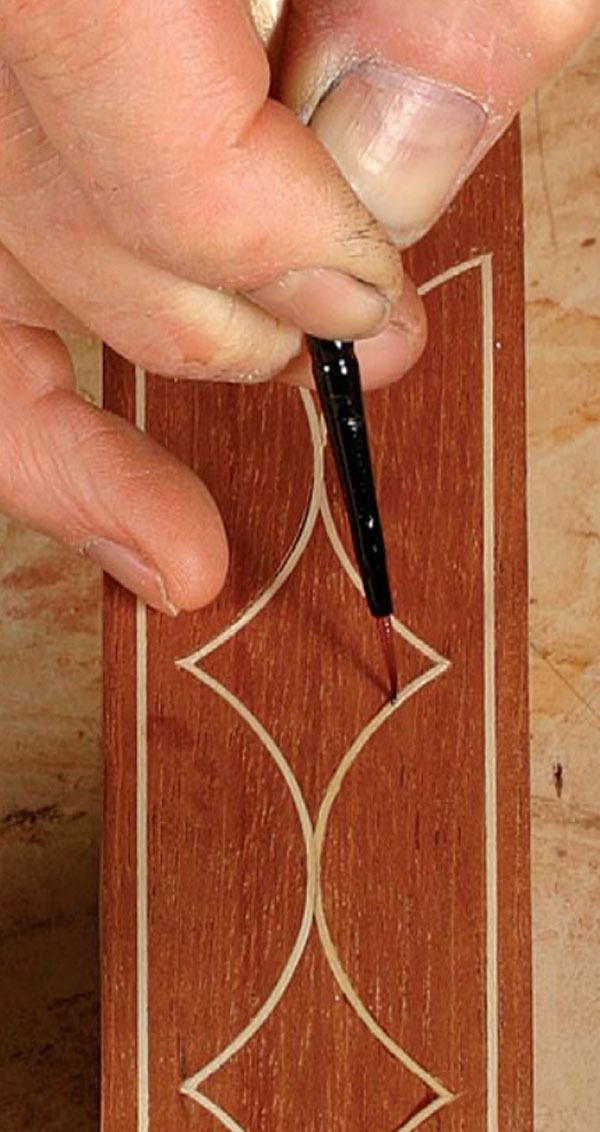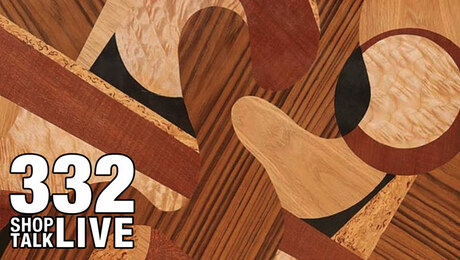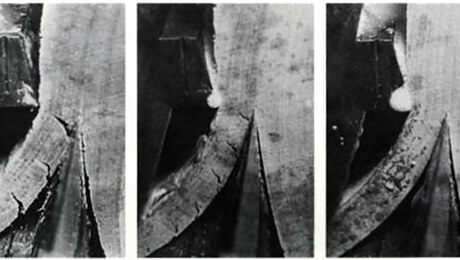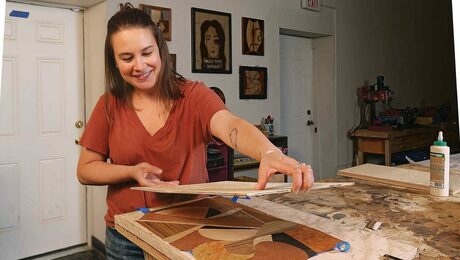Protect Inlay with Selective Staining
The secret to leaving inlaid areas unstained is to apply a clear finish beforehand
Synopsis: Master finisher Jeff Jewitt explains a technique for staining a piece without staining the stringing. Step by step, he details how he protects the unstained areas. He advises practicing on test pieces first.
Sometimes you want to preserve the natural color of inlay, stringing, and banding when staining a piece of furniture. On other pieces, you may want to selectively darken an area without affecting the majority of the piece. While it would seem logical simply to tape off certain parts, that method is not foolproof when staining a porous material. Unless there is a physical barrier other than tape, the stain will penetrate the maskedoff areas of bare wood.
Fortunately, there are several ways to get around this, involving both hand and spray applications. However, before you practice any of these techniques on your hard-earned inlay work, you should make a small piece exactly like the real thing and experiment on it.
Selective sealing isolates inlays
The secret to leaving inlaid areas unstained is to apply a clear finish beforehand. It’s best to use a fast drying finish such as lacquer or a 2-lb. cut of shellac. To avoid redissolving the finish, you must follow it with water-based dyes or oil-based stains. Do not use alcohol-based stains, fast-drying lacquer-based stains, or most premixed water-based stains. They contain solvents that may affect shellac or lacquer.
A steady brush seals stringing—Hand-painting a clear finish on light stringing can be tricky. The stringing is delicate and hard to see, so it helps to work with good backlighting and to use a brandnew #1 artist’s brush with a sharp tip.
Apply at least three coats of shellac, with an hour’s drying time between each coat. You don’t have to sand between coats. Let the last coat dry for at least four hours before applying the stain.
Because liquid stains are more likely to find any breach in the clear sealer and wick up into the inlay, I recommend using thicker gel stains. An alternative to buying a premade gel stain is to use dye concentrates to tint a clear-gel satin finish. If a spot of inlay gets hit with color, you usually can use the sharp tip of an X-Acto knife to clean it off. Once you are happy with the appearance of the piece, protect it with a clear finish.
From Fine Woodworking #178
For the full article, download the PDF below:
Fine Woodworking Recommended Products


Whiteside 9500 Solid Brass Router Inlay Router Bit Set

Foam Brushes





















Log in or create an account to post a comment.
Sign up Log in